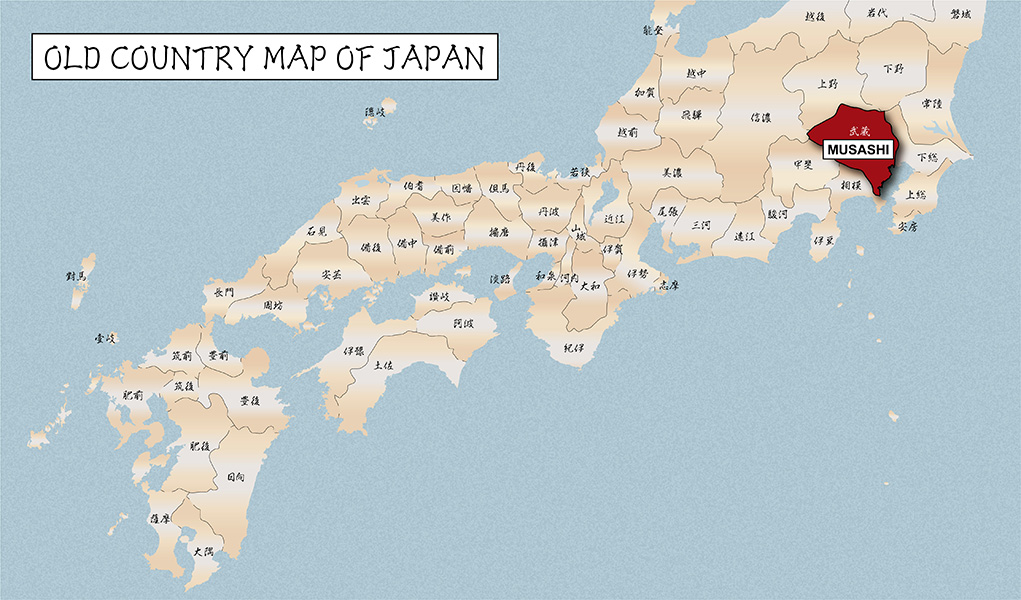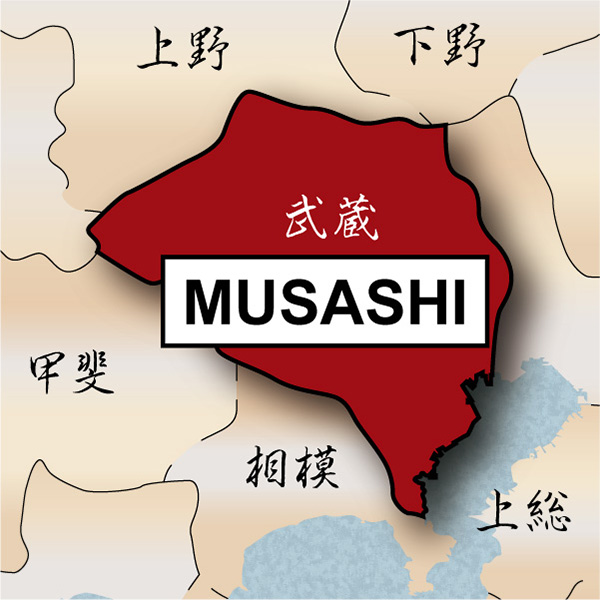Hello, world. Welcome to Samurai Museum Shop. Thank you for finding our website. In this post, we would like to introduce one of the prominent Japanese swordsmiths. We hope you will enjoy reading this post.
Hankei (繫慶) is one of the most renowned swordsmiths active during the early Edo period (Early 17th century). He is often called Noda Hankei because he also called himself Noda Zenshiro Kiyotaka (野田善四郎清堯). His real sirname is Ono. He served Tokugawa Ieyasu, the first Shogun, and Tokugawa Hidetada, the second head of the Edo government. Hankei also dedicated his creations to prestigious shrines in his career.
Hankei was born and raised in Mikawa province (today’s Aichi prefecture). His family ran a business of making matchlock guns for many generations. He learned how to make guns in his childhood and eventually moved to Edo City (today’s Tokyo) to become an apprentice of Akagari Sohachiro, a skilled gun maker. After mastering superb gun-making skills, Hankei became an independent gunsmith and moved to Hachioji city in Musashi province (today’s Tokyo prefecture).
According to available records, Hankei became a swordsmith after 1607, when Tokugawa Ieyasu, the first Shogun of the Edo government, left his Shogun position for his son and moved to Suruga province (today’s Shizuoka prefecture). Hankei was introduced to Tokugawa Ieyasu by his teacher, Sohachiro. And Hankei started to serve Tokugawa Ieyasu as a gunsmith first while forging blades. He used Kiyotaka as his gunsmith and swordsmith’s name. He stayed in Suruga province during 1610-1614. While he was assigned there, the second head Shogun, Tokugawa Hidetada, ordered Hankei to forge a matchlock gun to dedicate to Ichinomiya shrine, one of the most prestigious shrines in Japan back then. He was also assigned to make guns to dedicate to other renowned shrines.
After Tokugawa Ieyasu deceased in 1616, Hankei was relocated to Edo City by Tokugawa Hidetada. It is said that this was when he started using Hankei as his maker’s name. He was especially good at forging blades with Soshu Den tradition, one of the five most Japanese sword-forging traditions. Considering the fact that Hankei served the first and second Tokugawa shogun, his craftsmanship was highly appreciated by the Tokugawa government.


One of the most noticeable characteristics of Haneki’s work is Hijiki Hada. Hada is a grain surface made of folding steel. Hijiki is a Japanese seaweed. The Hada one finds in Hankei’s blades is much darker than regular Japanese swords. Because of its appearance, it is called Hijiki Hada. Also, he often engraved Bohi (straight groove line) on the blades. During his early-mid career, he used Kiyotaka as his maker’s name or Ono Hankei. However, he started to use Hankei (繫慶), a two-letter signature. He was especially active during 1607-1624.
We hope you enjoyed reading this post. If you are interested in checking his work, we happen to acquire an antique Wakizashi signed by him. More information is available by clicking the image below.
